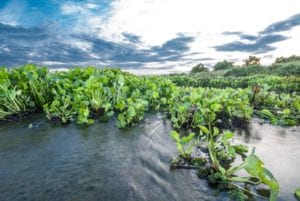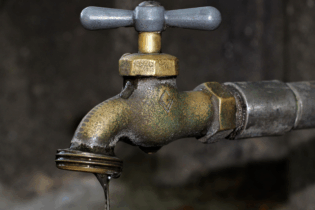Up to 50% of the annual inflows into two of South Africa’s important dams could be used up by alien plants over a period of 45 years, if they are left uncleared.
This warning about the Western Cape’s Berg River Dam catchment and Limpopo’s De Hoop Dam catchment could was issued by water experts Dr David Le Maitre of the CSIR; Dr James Blignaut of Stellenbosch University; Prof. Lynette Louw, Prof. Tally Palmer and Mr Ian Preston of Rhodes University In a recent paper titled Impact of invasive alien plants on water provision in selected catchments, the authors analyse the impacts of failing to control invasive alien plants on the future water supply in the catchments of two important dams. Given their greater use of water and South Africa’s limited water resources, it is critical to understand the impacts that not controlling these plants will have on water supplies. The study assumed that no alien plant management would occur in the two dam catchments over a 45-year period – the average lifespan of dams built in South Africa. In each catchment, the authors base current invasion levels on data from the National Invasive Alien Plant Survey, which was conducted in 2007 and 2008. Using 2008 as the base year, the estimated costs of clearing are based on the cost of clearing, including the costs of follow-up clearing. “The dynamics of alien invasive plants are such that repeated follow-up clearing is required to counter the regeneration of the plants,” explains Le Maitre, adding that a follow-up fire within two years of the initial clearing can kill all the seedlings and minimise the need for further treatments. It is important to note that the results show the estimated effects of the uncontrolled growth of invasive alien plants on river flows into the dam, rather than on yield.Berg River Catchment
Located in Franschhoek, the Berg River Dam is part of a scheme that provides water to Cape Town. The government’s Working for Water programme has been tasked with clearing invasive alien plants and, at the end of 2013, spent more than R90 million clearing the equivalent of 3 600 hectares of dense stands of pines and acacias in the catchment.In the worst case scenario, where the average tree age is 20 years, the invasion would increase from 3% to between 49 and 99% of the invadable area in the catchment. The result would be that river flows into the dam would be reduced by up to 50%, with significant implications for Cape Town and the irrigation schemes that depend on water from this dam. To clear the invasion at this point, would cost over 3000% more.








